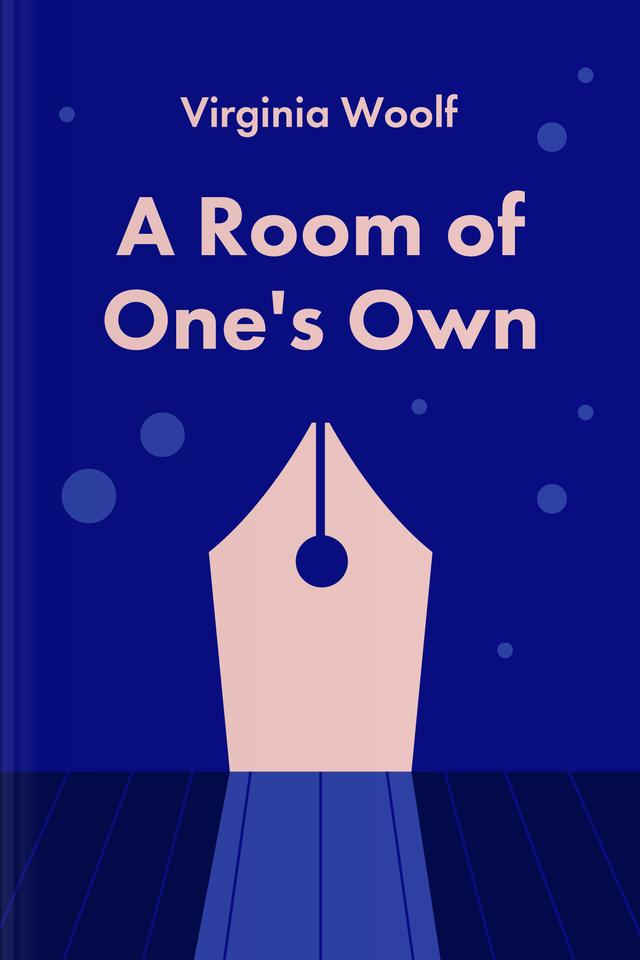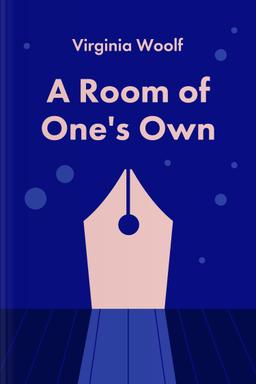You’ll learn
- Why need personal space
- The now ridiculous gender-forced limits
- What truth Woolf portrayed
- Why write from experience
russia has launched a full-scale war in Ukraine. Donate to support Ukraine and protect the world’s peace.

first KEY POINT
In the modern world, being a woman has become an easier task than ever before. In the past, women didn't have the numerous opportunities that men had. Virginia Woolf, a prominent English writer of the 20th century, struggled with many limitations too. In A Room of One's Own, she reflects on the life peculiarities of women as writers and characters in books. Her feminist work helps us learn how women felt in the past and how they were portrayed.One of the brightest thoughts in the book is that, to become a writer, a woman has to have her own room. Using her fictional name, Mary, Woolf tells a story about her stroll in an imaginary university called Oxbridge on a charming autumn morning. Nature and buildings were beautiful, and Mary plunged into her thoughts. She was interrupted by a warden because she didn't notice how she was walking on the lawn. The warden's outrageous facial expression and gestures indicated she shouldn't have walked on the grass.A modern reader would think that he wanted to protect plants from human intrusion. However, the true reason for the warden's disturbance was that a woman allowed herself to walk in a place that was only accessible to men, and women could only walk on the path.Writing about fiction, Woolf expressed a profound thought that a story has to follow the facts to be good. So she decided to describe all situations the way they actually happened, even without embellishing the season when they happened.
Woolf dined with Mary Seton in the dining room, thinking about the inability to order food in her room because she was a woman. During their conversation, Mary mentioned her mother and the possibility of starting a business to make a lot of money. Her mother could have invested this money in education for women, and the conversation could have happened in her room with the ordered food and wine.After reading this summary, you will understand which limitations women faced while wanting the same possibilities as men. For example, a woman couldn’t enter the library without being accompanied by a man. You will read more ridiculous restrictions women had to endure in their challenging routine. Woolf vividly conveyed emotions that women felt while trying to survive in the world of men.
second KEY POINT
Speaking further about the hypothetical wealth of Mary's mother, Woolf reflected on whether she could give birth to 13 children while simultaneously making money. She described how women usually became mothers. They give birth, feed the child for approximately four months, and play with them for five years. Woolf asked Mary which memories about her childhood she could have had if her mother made money instead of playing with her. Woolf concluded that Mary wouldn't exist if her mother had been focused on wealth accumulation.She also added that her mother wouldn't be able to earn much money. But even if she could, she wouldn't retain it because the judicial system of that time prohibited women from possessing money of their own. Mary's mother had to give all her money to her husband. So even if she had any idea of how to use it for business development, she wouldn't have any motivation for earning big money and providing it all to her husband.

Continue reading with Headway app
Continue readingfirst KEY POINT
second KEY POINT
third KEY POINT
fourth KEY POINT
fifth KEY POINT